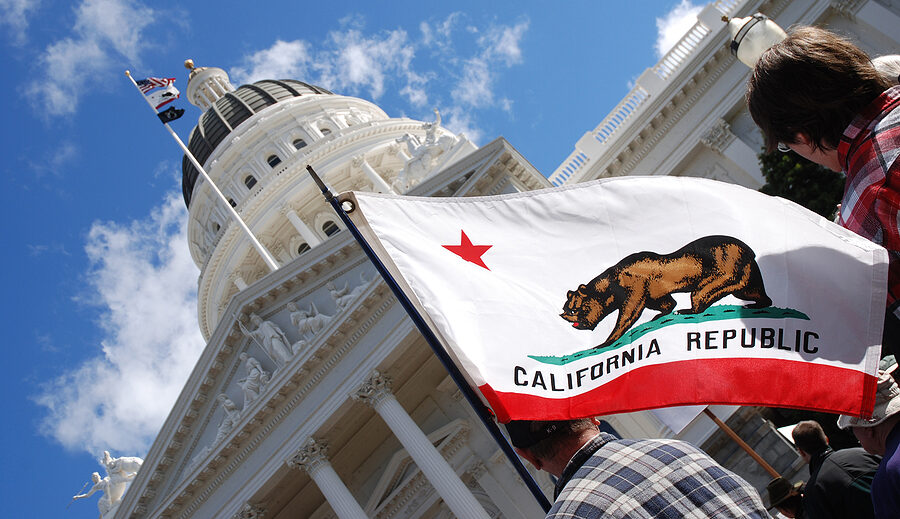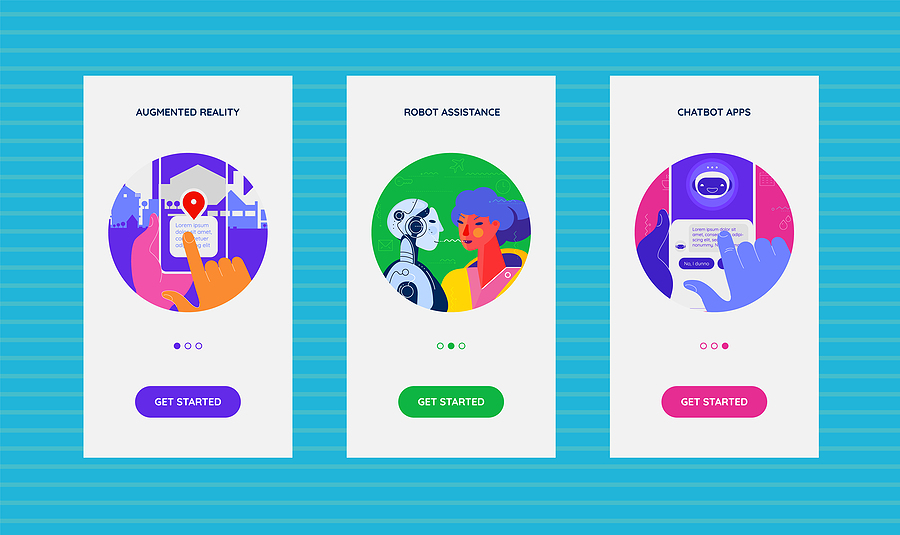
Five on Friday: Privacy, Subscription Sharing and Streaming Growth
Wherever you are reading this, we hope you are safe, well and practicing social distancing to keep you and your loved ones safe. In this week’s Five on Friday, we share the results of a recent survey that show more than half of Americans have shared their subscription account information. Also, YouTube and Google explain how they are helping the coronavirus cause, and several industries are asking the state of California to put new privacy rules on pause. In streaming and TV news, Nielsen estimates that viewership may increase by more than 60% as we shelter in place, and ESPN scrambles to provide compelling content when there are no live sports to report.
More than Half of Americans Have Shared Access to Their Subscriptions
A recent subscription survey by Bankrate shows that more than 56% of Americans have shared some of their subscription account information with others. The most popular type of subscription to share is video streaming with 46% of Americans saying they’ve let someone else use their account. Music streaming is next at 24%, followed by 8% who have shared online journalism accounts. Approximately 44% of Americans say they have never allowed someone else to access their accounts.
Bankrate reports that younger Americans are most likely to share their subscription accounts.

Who is doing the sharing? Bankrate says that friends are the mostly likely source for sharing at 29%, followed by significant others at 29%, parents at 28%, and siblings at 26%. Other sources including parents who use their child’s account (9%), former significant others (9%), strangers (9%) and uncategorized people (8%).
For additional survey results and analysis, read Kendall Little’s original article, “Survey: 56% of Americans Have Shared Subscription Account Information” on Bankrate.com.
33 Companies and Organizations Ask California to Delay New Privacy Rules Until January 2021
As a result of the coronavirus pandemic, 33 trade associations, organizations and companies have asked the state of California to extend the date for compliance of the new California Consumer Privacy Act (CCPA). The organizations including the California Credit Union League, California Retailers Association, UPS and the Civil Justice Association of California wrote to California Attorney General Xavier Becerra on March 17 to request a “temporary forbearance from CCPA enforcement.” The requestors represent a variety of industries including advertising and marketing, magazine publishing, internet and online services, retail, utilities, transportation, entertainment, retailers, auto and more.

“We strong support the underlying purpose and goals of the California Consumer Privacy Act (CCPA). We believe consumer privacy is an important value that deserves meaningful protections in the marketplace,” reads the letter. “However, we are concerned that given current events and the presently unfinished status of the regulations implementing the CCPA, business will not have the operational capacity or time to bring their systems into compliance with the final regulatory requirements by July 1, 2020.”
The organizations outline two key points in the letter:
- The coronavirus pandemic hinders the attempt of businesses to develop process to comply with CCPA.
- Businesses need time to implement CCPA regulatory requirements which are still in the process of being finalized.
The letter requests that the California attorney general delay enforcement of CCPA until January 2, 2021 to allow companies and organizations additional time to implement the necessary changes to become complaint. Access the full letter at ANA.net.
Coronavirus ‘Shelter in Place’ Orders Could Increase Viewers’ Streaming Consumption by 60%
With millions of Americans sheltering in place as a result of the coronavirus outbreak, it should come as no surprise that the use of streaming services is rising rapidly, whether viewers are tuning into news broadcasts, movies or TV shows. In fact, Nielsen estimates there will be an average increase of 61% in streaming video consumption right now, reports Variety. Here are some other fun facts from Nielsen that estimate streaming consumption.

- About 91% of all American adults subscribe to a streaming video service like Netflix, Hulu or Amazon Prime
- About 96% of adults aged 18 to 34 subscribe to a streaming video service
- 30% of all U.S. consumers subscribe to three or more video services
- Remote workers watched more than three hours more during a typical Monday through Friday work week (25 hours, 2 minutes) than in-office workers (21 hours, 56 minutes)
For more Nielsen data estimates and analysis, read Todd Spangler’s “Quarantine Life: Staying at Home Can Drive Up TV Viewing 60% or More, Nielsen Says” on Variety.com.
How ESPN Is Handling the Coronavirus Outbreak Without Live Sports to Cover
The NBA and NHL have suspended their 2019-20 seasons. March Madness was canceled. MLB canceled the rest of spring training, and Opening Day, originally scheduled for March 26, has been postponed. Most recently, Olympic organizers have postponed the 2020 Tokyo Summer Olympics until sometime in 2021. Fans and athletes are disappointed, but most understand that this is a time for sacrifice and coming together to protect the health of citizens around the world.
What’s a sports network like ESPN to do when there are no live sports to cover? CNBC reports that ESPN is scrambling to figure out how to provide compelling sports content to fill the gaps, satisfying both advertisers and viewers. Some programming like Sports Center has plenty of archived content, ESPN originals and scheduled programming it can turn to, but the network also has to fill all the time slots that would have been filled with live sports. This includes programming on its primary channel, ESPN, but also on its streaming service, ESPN+, and its linear networks, ESPN2, ESPNU and ESPN3.
CNBC says that airing Sports Center hourly for the bulk of its programming day.
It can also turn to breaking sports news like the NFL’s free agency period, and
news of players who have either tested positive for coronavirus or who are
helping their communities in some way. ESPN will undoubtedly have be creative,
but we think it is possible and fans will understand. This situation is beyond
everyone’s control, we must grant ESPN and others affected by the coronavirus
much grace and latitude.
“We have great relationships with our league partners and are confident we can address all issues constructively going forward,” an ESPN spokesperson said. “We are working closely with our partners during this unprecedented situation. Our immediate focus is everyone’s safety and well-being.”

What Google and YouTube Are Doing to Support the Global Community During the Coronavirus Pandemic

With millions of American workers and school kids now at home, there are a lot of changes to how we use the internet, including more demand on streaming video services and a need for more information about COVID-19. In response, YouTube and Google have committed to making some changes for the near term.
- YouTube is reducing the quality of streaming videos to lighten the load on network servers.
- In the European Union, YouTube is switching streaming quality to standard definition as the default setting.
- On the front page of the YouTube app, YouTube is adding a COVID-19 info panel to help users find reliable content.
- To help meet the growing need for more educational content for kids and families, Google and YouTube have launched Learn@Home, a website that directs families with kids to age appropriate content (preschoolers, kids 5 and up and kids 13 and older)
- The YouTube Kids app is another place where parents and kids can get content designed specifically for children. It is available for Android and iOS.
- Google is partnering with the federal government to develop a website with information about the coronavirus, including educational materials, prevention information, and local resources across the country. It also includes links to authoritative sources such as the World Health Organization and the Centers for Disease Control.
- YouTube is patrolling the site to remove misinformation about COVID-19. They also have strict advertising policies that dictates what types of ads they’ll allow.
For more information, visit Google’s March 15 blog post by Sundar Pichai, CEO of Google and Alphabet, about measures that YouTube and Google are taking to help during this health crisis.







